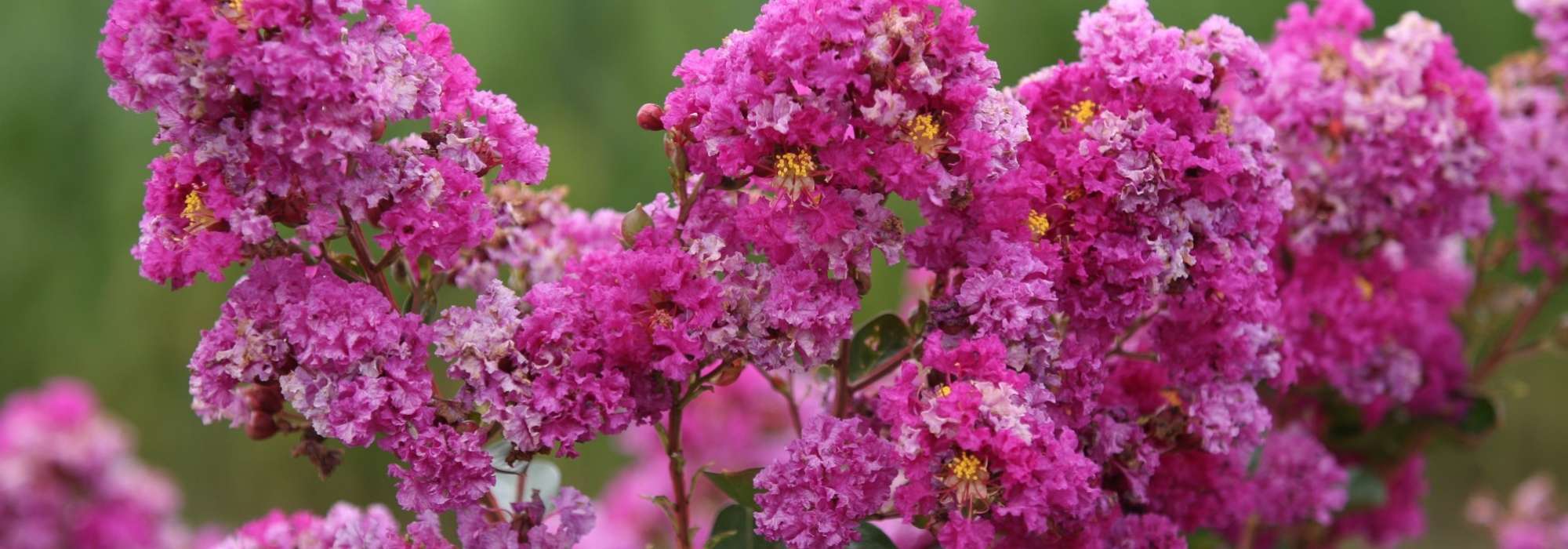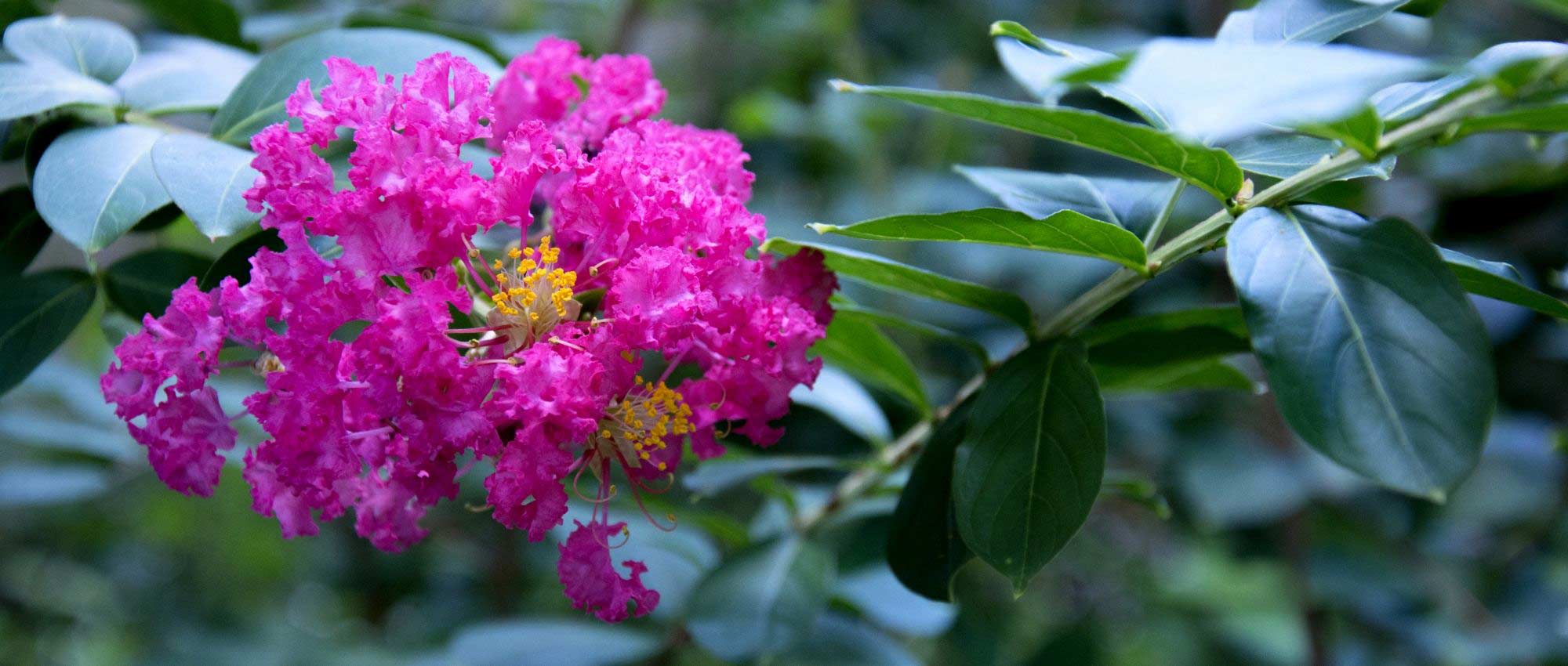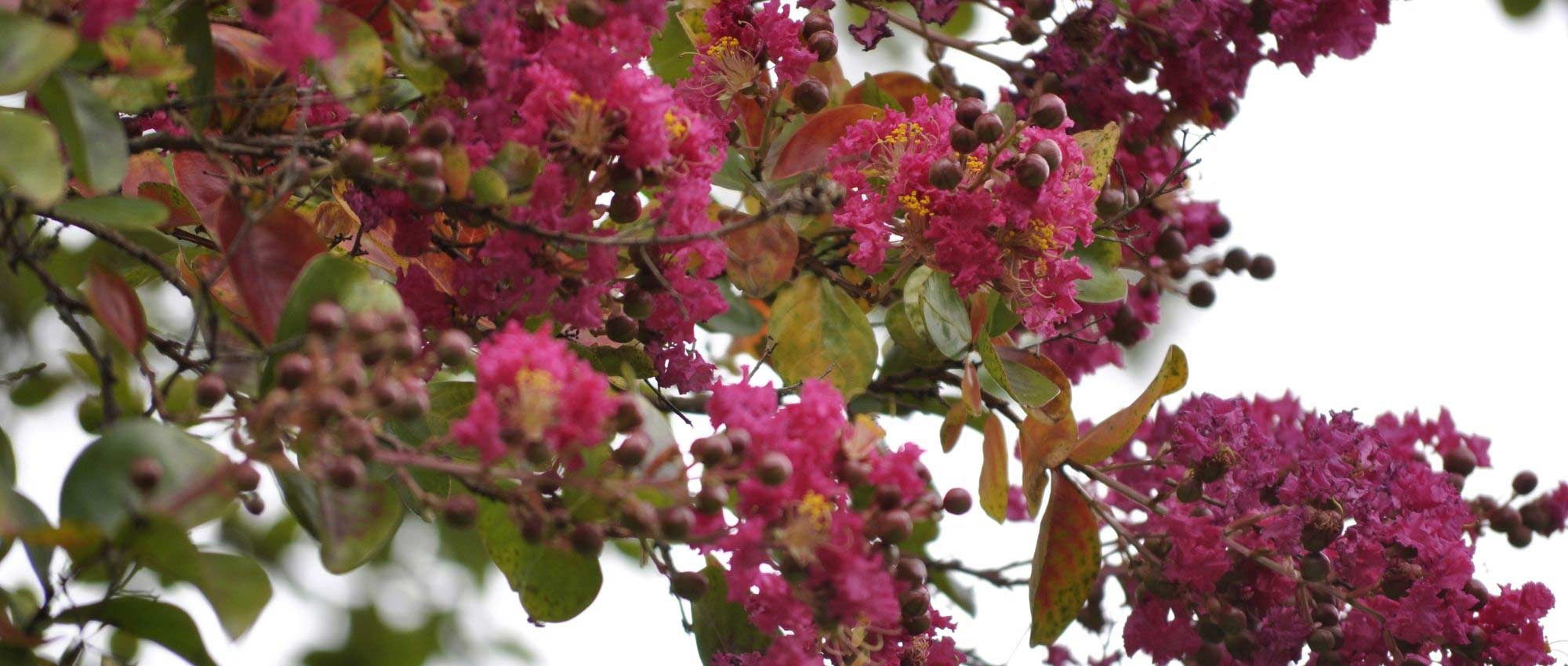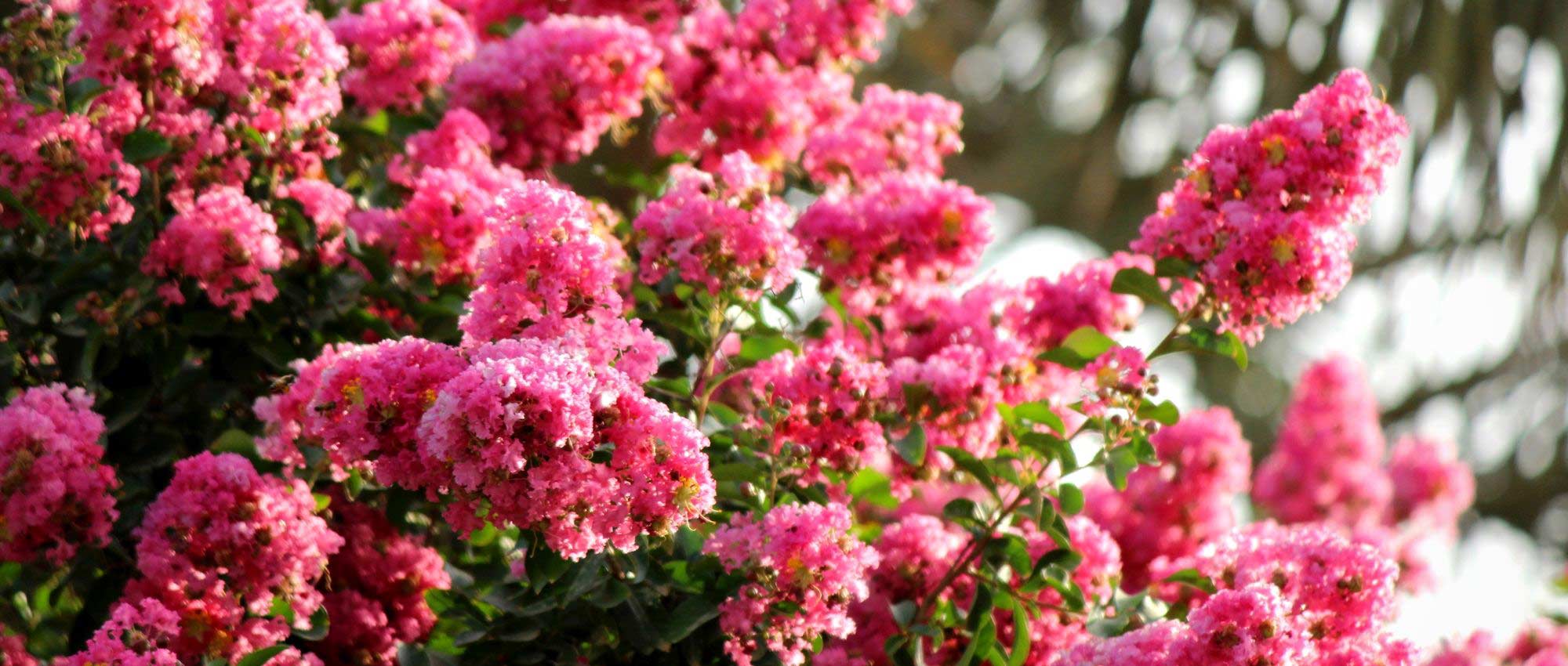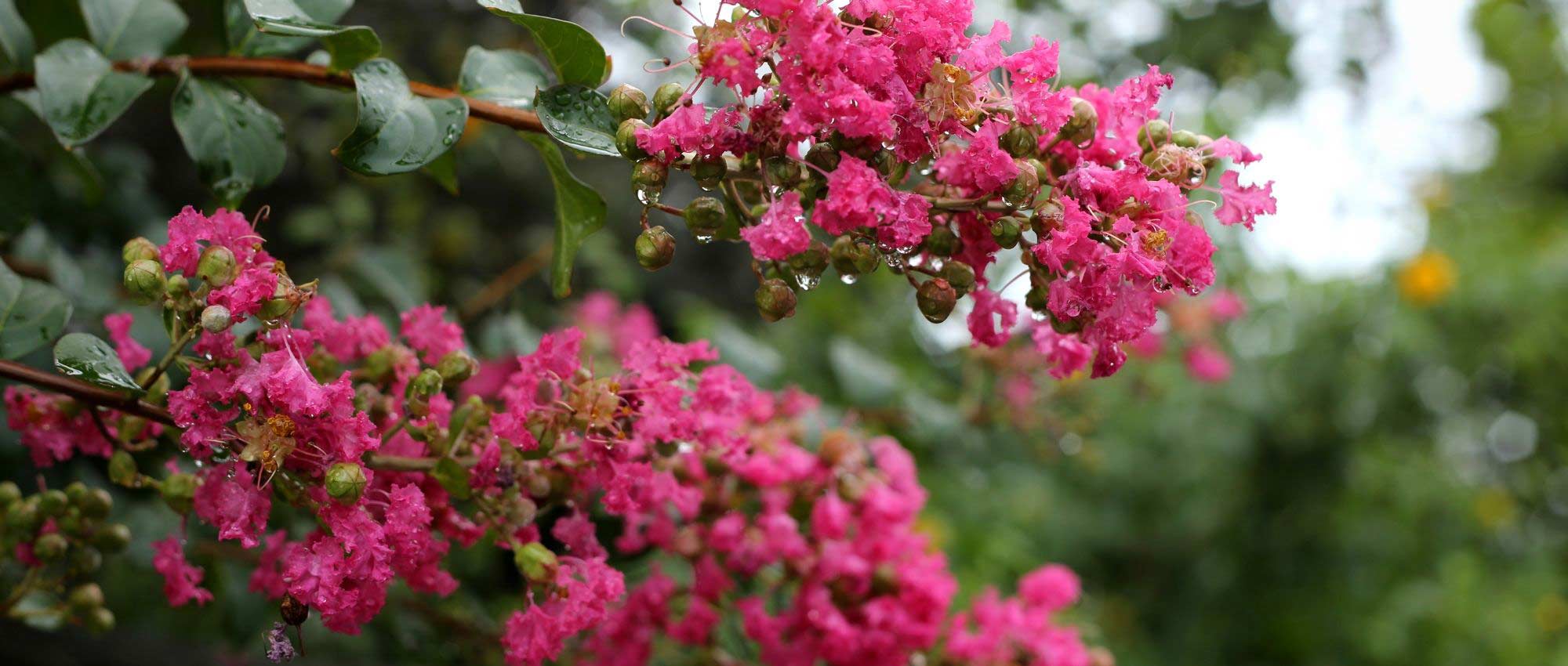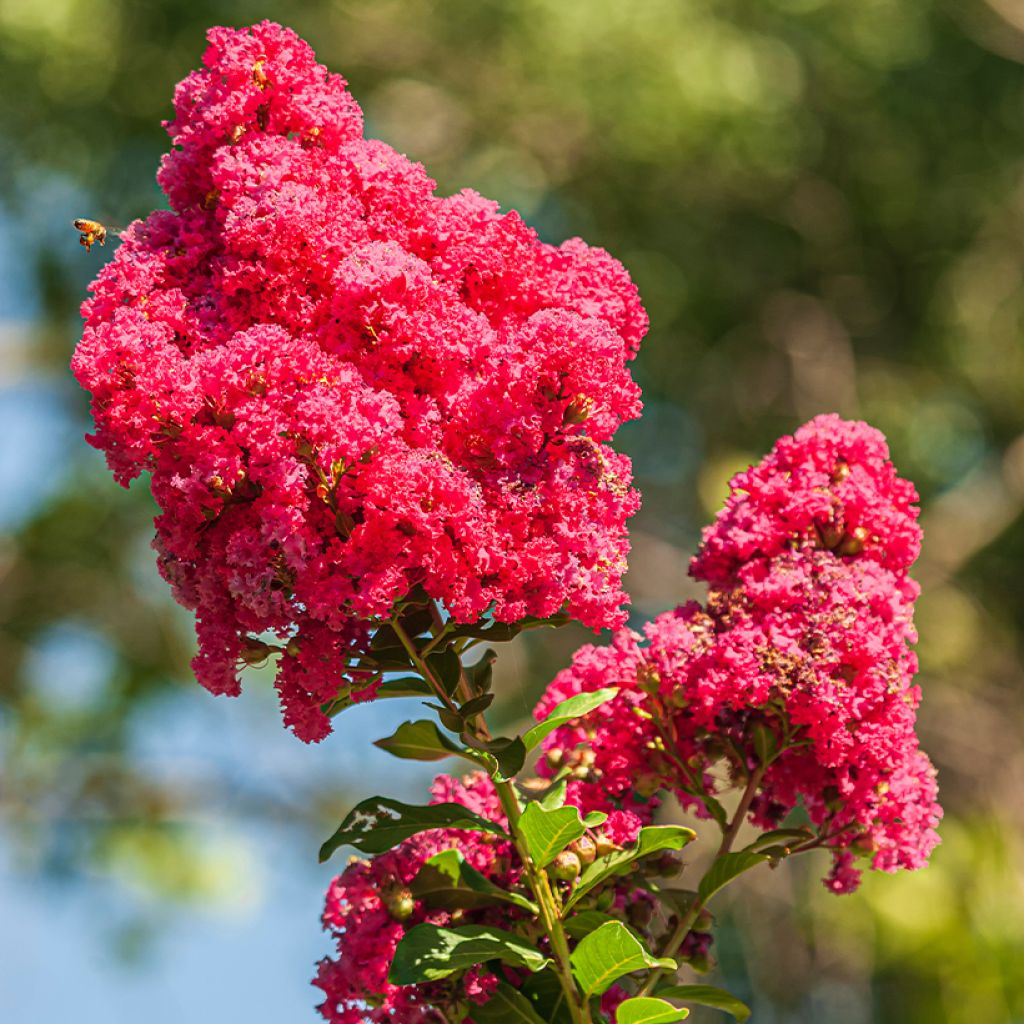

Lagerstroemia indica Enduring Red
Lagerstroemia indica Enduring Red
Lagerstroemia indica Piilag B5 (ENDURING® RED)
Crape Myrtle, Crepe Myrtle
Special offer!
Receive a €20 voucher for any order over €90 (excluding delivery costs, credit notes, and plastic-free options)!
1- Add your favorite plants to your cart.
2- Once you have reached €90, confirm your order (you can even choose the delivery date!).
3- As soon as your order is shipped, you will receive an email containing your voucher code, valid for 3 months (90 days).
Your voucher is unique and can only be used once, for any order with a minimum value of €20, excluding delivery costs.
Can be combined with other current offers, non-divisible and non-refundable.
Home or relay delivery (depending on size and destination)
Schedule delivery date,
and select date in basket
This plant carries a 24 months recovery warranty
More information
We guarantee the quality of our plants for a full growing cycle, and will replace at our expense any plant that fails to recover under normal climatic and planting conditions.
Does this plant fit my garden?
Set up your Plantfit profile →
Description
The Lagerstroemia indica 'Enduring Red' is a Indian Lilac with a particularly compact habit. Its bright red flowering is both early and long-lasting, as this variety reblooms throughout the summer. Its foliage is also noteworthy: the young shoots are purplish before turning green, and then the bush adopts a warm autumnal red colouration. This Lagerstroemia is a true four-season plant; after the leaves fall, the winter allows us to admire its beautiful bark. When exposed to full sun, whether in the ground or in a container, this Lagerstroemia will express its full potential in a rich, fresh, and well-drained soil or growing substrate.
The Lagerstroemia indica is a member of the Lythraceae family, which includes about thirty relatively unknown genera in our gardens, with the exception of the small Cuphea in the Mediterranean region and the pomegranate (formerly classified in the Punicaceae family but now included in the Lythraceae family). In nature, we also find the Common Loosestrife, a lovely flowering plant found near water. Woody species of Lythraceae are native to warm areas of the globe, such as the Mediterranean or the tropics. Lagerstroemias are native to tropical Asia, with the L. indica species originating from China and Japan, where it is used as an ornamental plant in Southeast Asia, for example in the Philippines. It is generally a tall shrub, reaching 5 or 6 meters (16 feet 5 inches or 19 feet 8 inches) in height, developing on multiple axes. Nurseries also offer plants trained as trees with a single trunk.
The 'Enduring Red' variety is a recent selection (2009) chosen for its very compact habit and superb flowering. When fully grown, it reaches only 1.50 meters (4 feet 11 inches) in height and 1 meter (3 feet 4 inches) in width, and branches well even without pruning. Its upright and dense branches see the emergence of young purplish leaves in spring, which turn into a shiny dark green during the growing season. In early July, the spectacular flowering appears, in the form of abundant clusters of bright red flowers. This flowering continues throughout the summer, making this shrub a remarkable focal point in the garden. In autumn, the foliage takes over by turning red. After the leaves fall, the smooth and highly decorative bark, peeling off in plates, becomes a new attraction, particularly in rainy weather when it is highlighted.
Resistant to approximately -15°C (5 °F) and pollution, it is an excellent plant for small urban gardens, as well as for terraces.
This small Enduring Red Lagerstroemia will be perfect in a decorative container or large pot. It will bring an explosion of colour during the summer, a time when few shrubs are in bloom. Requiring regular watering during this season, it should, on the contrary, be kept relatively dry after the leaves fall, in a frost-free but cool location in cold regions. If you choose to plant it in the ground in the garden, it can be associated with other plants in diverse flower beds, either by selecting staggered blooms throughout the season or by creating a cluster of summer flowers. To benefit from a wide choice of colours, you can then associate it with roses, Hibiscus syriacus, or Hydrangeas.
The Indian Lilac also has many other evocative and charming names; crepe myrtle, crape myrtle, lagerose, curly Chinese myrtle, crepe paper flower. Carl Linnaeus named this tree to pay tribute to his friend Magnus von Lagestroem (1696-1759), who had sent it to him from India for identification. Originally, this tree was used to decorate Chinese temples. We would like to point out that this tree produces fruits that have a narcotic effect if ingested.
Lagerstroemia indica Enduring Red in pictures
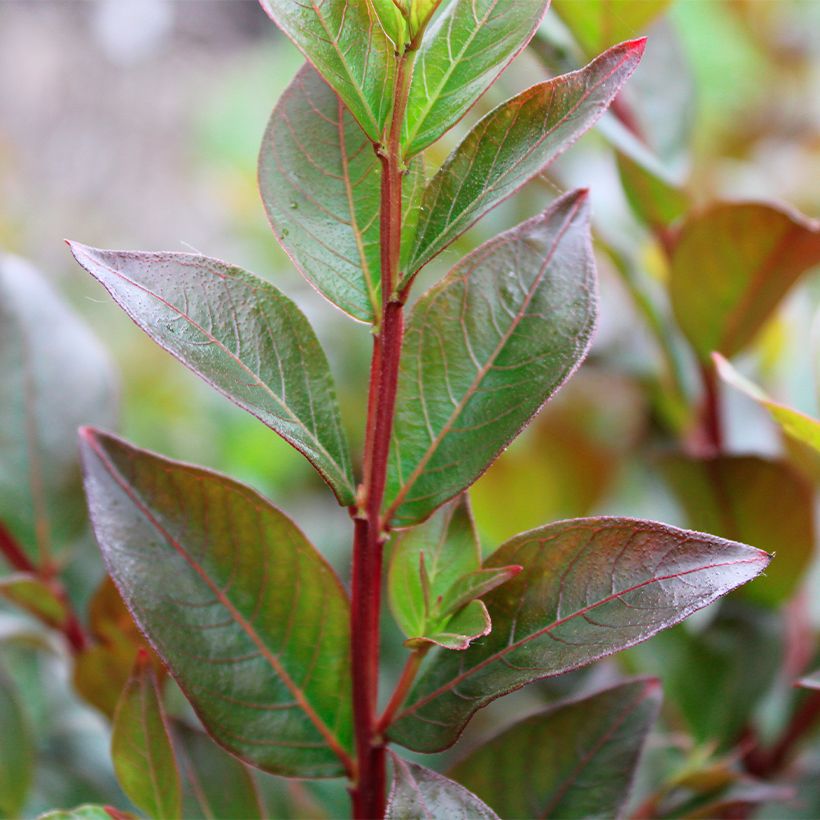

Plant habit
Flowering
Foliage
Botanical data
Lagerstroemia
indica
Piilag B5 (ENDURING® RED)
Lythraceae
Crape Myrtle, Crepe Myrtle
Cultivar or hybrid
Planting and care
We recommend planting the Lagestroemia indica 'Enduring Red' in spring, when there is no longer any risk of frost, in a very sunny and sheltered location, warm, in a rich, moist, well-drained soil, preferably non-calcareous (or at least without excess limestone). Soak the root ball in a bucket for about twenty minutes to moisten it well before planting. Enrich the planting hole with a mixture of planting soil and compost, and water well after planting. Water regularly during the summer for the first two years, then the Lagerstroemia will tolerate dry conditions quite well, but will always appreciate occasional watering, which will promote flowering. It will benefit from a compost application and a thick layer of dead leaves, especially during the first two winters in cold regions.
If planted in a container, watering will be necessary every summer, however, after the leaves have fallen, the substrate should be allowed to dry to avoid damaging the roots. In cold regions, it would be wise to overwinter the bush in a bright garage or a cold room to protect it from severe frost.
Planting period
Intended location
Care
Planting & care advice
-
, onOrder confirmed
Reply from on Promesse de fleurs
Haven't found what you were looking for?
Hardiness is the lowest winter temperature a plant can endure without suffering serious damage or even dying. However, hardiness is affected by location (a sheltered area, such as a patio), protection (winter cover) and soil type (hardiness is improved by well-drained soil).

Photo Sharing Terms & Conditions
In order to encourage gardeners to interact and share their experiences, Promesse de fleurs offers various media enabling content to be uploaded onto its Site - in particular via the ‘Photo sharing’ module.
The User agrees to refrain from:
- Posting any content that is illegal, prejudicial, insulting, racist, inciteful to hatred, revisionist, contrary to public decency, that infringes on privacy or on the privacy rights of third parties, in particular the publicity rights of persons and goods, intellectual property rights, or the right to privacy.
- Submitting content on behalf of a third party;
- Impersonate the identity of a third party and/or publish any personal information about a third party;
In general, the User undertakes to refrain from any unethical behaviour.
All Content (in particular text, comments, files, images, photos, videos, creative works, etc.), which may be subject to property or intellectual property rights, image or other private rights, shall remain the property of the User, subject to the limited rights granted by the terms of the licence granted by Promesse de fleurs as stated below. Users are at liberty to publish or not to publish such Content on the Site, notably via the ‘Photo Sharing’ facility, and accept that this Content shall be made public and freely accessible, notably on the Internet.
Users further acknowledge, undertake to have ,and guarantee that they hold all necessary rights and permissions to publish such material on the Site, in particular with regard to the legislation in force pertaining to any privacy, property, intellectual property, image, or contractual rights, or rights of any other nature. By publishing such Content on the Site, Users acknowledge accepting full liability as publishers of the Content within the meaning of the law, and grant Promesse de fleurs, free of charge, an inclusive, worldwide licence for the said Content for the entire duration of its publication, including all reproduction, representation, up/downloading, displaying, performing, transmission, and storage rights.
Users also grant permission for their name to be linked to the Content and accept that this link may not always be made available.
By engaging in posting material, Users consent to their Content becoming automatically accessible on the Internet, in particular on other sites and/or blogs and/or web pages of the Promesse de fleurs site, including in particular social pages and the Promesse de fleurs catalogue.
Users may secure the removal of entrusted content free of charge by issuing a simple request via our contact form.
The flowering period indicated on our website applies to countries and regions located in USDA zone 8 (France, the United Kingdom, Ireland, the Netherlands, etc.)
It will vary according to where you live:
- In zones 9 to 10 (Italy, Spain, Greece, etc.), flowering will occur about 2 to 4 weeks earlier.
- In zones 6 to 7 (Germany, Poland, Slovenia, and lower mountainous regions), flowering will be delayed by 2 to 3 weeks.
- In zone 5 (Central Europe, Scandinavia), blooming will be delayed by 3 to 5 weeks.
In temperate climates, pruning of spring-flowering shrubs (forsythia, spireas, etc.) should be done just after flowering.
Pruning of summer-flowering shrubs (Indian Lilac, Perovskia, etc.) can be done in winter or spring.
In cold regions as well as with frost-sensitive plants, avoid pruning too early when severe frosts may still occur.
The planting period indicated on our website applies to countries and regions located in USDA zone 8 (France, United Kingdom, Ireland, Netherlands).
It will vary according to where you live:
- In Mediterranean zones (Marseille, Madrid, Milan, etc.), autumn and winter are the best planting periods.
- In continental zones (Strasbourg, Munich, Vienna, etc.), delay planting by 2 to 3 weeks in spring and bring it forward by 2 to 4 weeks in autumn.
- In mountainous regions (the Alps, Pyrenees, Carpathians, etc.), it is best to plant in late spring (May-June) or late summer (August-September).
The harvesting period indicated on our website applies to countries and regions in USDA zone 8 (France, England, Ireland, the Netherlands).
In colder areas (Scandinavia, Poland, Austria...) fruit and vegetable harvests are likely to be delayed by 3-4 weeks.
In warmer areas (Italy, Spain, Greece, etc.), harvesting will probably take place earlier, depending on weather conditions.
The sowing periods indicated on our website apply to countries and regions within USDA Zone 8 (France, UK, Ireland, Netherlands).
In colder areas (Scandinavia, Poland, Austria...), delay any outdoor sowing by 3-4 weeks, or sow under glass.
In warmer climes (Italy, Spain, Greece, etc.), bring outdoor sowing forward by a few weeks.






























